|
|
|
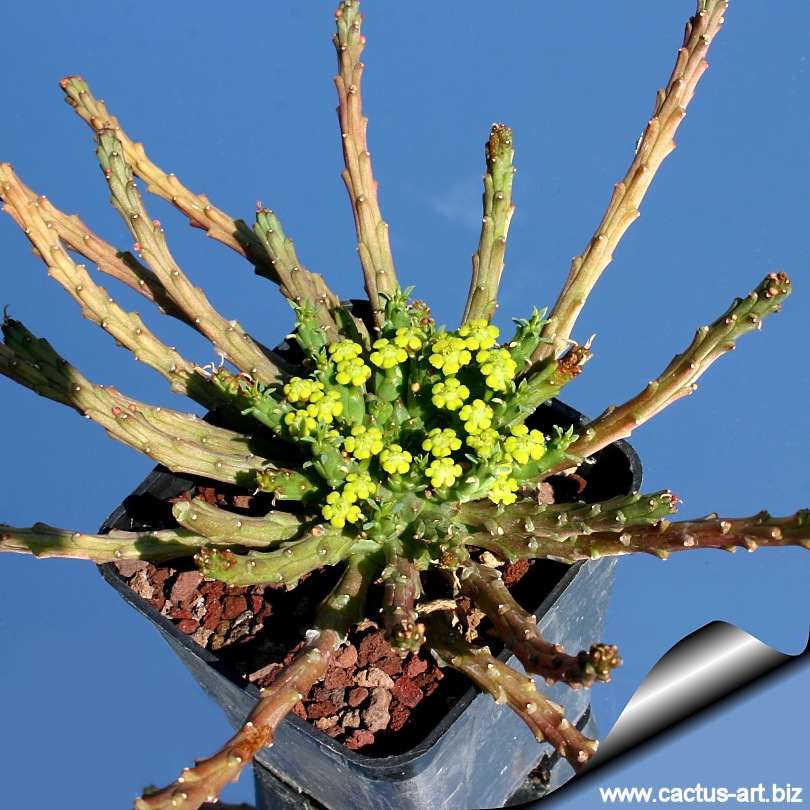
Euphorbia pugniformis
Of all the dwarf succulent South African Euphorbia this is
undoubtedly one the most striking and popular.
|
|
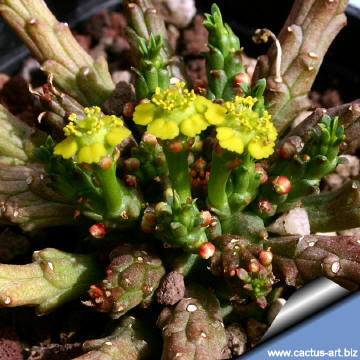 |
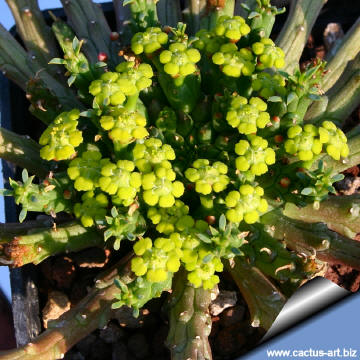 |
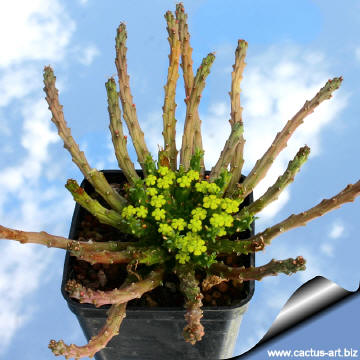 |
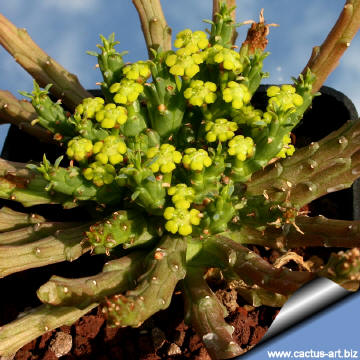 |
|
Note: As with all other Euphorbias when a plant get damaged it
exudes a thick white milky sap known as latex. The latex is a violent
emetic and purgative and is used by natives for the purpose of curing
indigestion and constipation. The sap is highly irritant, however. A
case of death from drinking a concoction of the plant is on record. A
yellow resinous substance in this plant called Euphorbin can cause
terrible blistering of the skin. |
|


Advertising
|
|
|
|
|
Family: Euphorbiaceae
Scientific name: Euphorbia pugniformis Boissier
In: PSRV 15(2):92, 1862
Origin: South Africa, Western and Eastern Cape, over a wide
coastal area from King Williams Town westward to Mossel Bay.
Habitat: Grows in sandy places.
Conservation status: Listed in
CITES appendix 2.
Etymology: Latin "pugnus"= "fist" and Latin
"-formis"= "-shaped"
perhaps for the shape of the branches.
Conservation status: Listed in
CITES appendix 2.
Synonyms:
- Euphorbia procumbens Miller
|
|
Description: Euphorbia pugniformis is a dwarf spineless
“medusaform” Euphorbia that in its normal form has two to three rows of
lateral shoots around the deepen tip of a swollen succulent base. It is
closely related to E. gorgonis and can be confused with
E. woodii but it is smaller.
Root: Merging into stem.
Stem: The main stem (caudex), is partly buried in the ground
arises from root forming a subglobose and slightly depressed body 5-8 cm
thick, the central growing point is densely tuberculate. It is crowned
with numerous radiating branches, that are relatively skinny,
cylindrical and tapering toward the tips ± 8 mm Ř, 5-30 cm long,
tessellately covered with tubercles up to 3 mm long.
Leaves: Each tubercle bears one lanceolate, deciduaous, green
leaflet up to 4-8 mm long.
Flowers: Cyathia solitary yellowish-green, produced mostly around
the central stem tip, peduncle up to 4 mm with minutely toothed
greenish-yellow nectar glands.
|
|
|
|
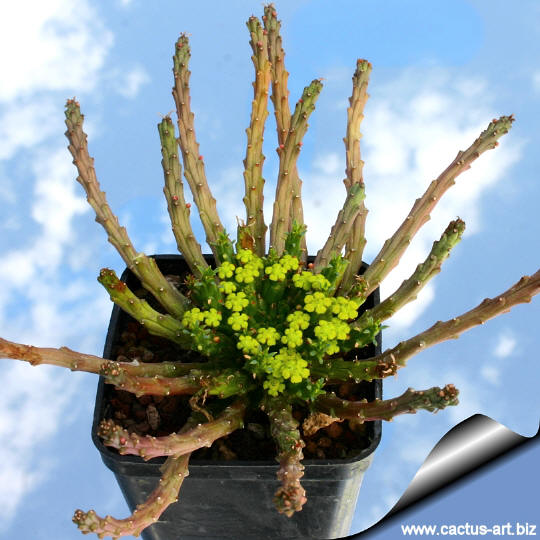
Cultivation: This is a relatively fast growing species, It like a
sunny position and does best in a mineral soil, but is tolerant of a
wide range of soil types. Good drainage is essential. Water sparingly
during the summer months and keep quite dry in winter. It can tolerate
moderate shade, and a plant that has been growing in shade should be
slowly hardened off before placing it in full sun as the plant will be
severely scorched if moved too suddenly from shade into sun.
Propagation: Seeds cuttings.
Photo of conspecific taxa, varieties, forms and
cultivars of Euphorbia pugniformis.
|
|